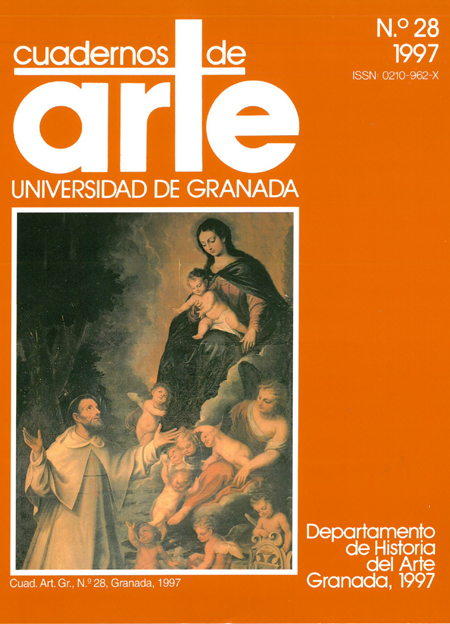Los orígenes del Museo Arqueológico de Granada: el auge de la Arqueología científica y la comisión provincial de monumentos
Palabras clave:
Museos arqueológicos, Arqueología, Bienes culturales, Datos históricos, Museo Arqueológico de GranadaResumen
La génesis del Museo Arqueológico de Granada, al igual que la del resto de los museos de antigüedades españoles, estuvo estrechamente vinculada a dos fenómenos característicos del xix. En primer lugar, el auge de la arqueología científica, alejada ya de cualquier matización animista o sacralizada, como consecuencia de la nueva valoración dela Historia que, tras su asunción por parte de la ideología burguesa revolucionaria, bajo el prisma nacionalista y la poética de las ruinas, terminará imponiéndose progresivamente en toda Europa. En segundo lugar, la adopción de una legislación protectora específica de los bienes culturales legataria en su orientación técnica, jurídica e ideológica
del pensamiento ilustrado, mediante unidades administrativas creadas ex profeso, si bien con carácter honorario, representadas en las comisiones de monumentos históricos y artísticos desde 1844. En el presente trabajo se aborda un apretado resumen de las implicaciones que ambos fenómenos tuvieron en el museo granadino.
Descargas
Los datos de descargas todavía no están disponibles.
Descargas
Publicado
1997-11-01
Cómo citar
Villafranca Jiménez, M. del M. (1997). Los orígenes del Museo Arqueológico de Granada: el auge de la Arqueología científica y la comisión provincial de monumentos. Cuadernos De Arte De La Universidad De Granada, 28, 183–191. Recuperado a partir de https://revistaseug.ugr.es/index.php/caug/article/view/10785
Número
Sección
Estudios
Licencia
Los autores que publican en esta revista están de acuerdo con los siguientes términos:- Los autores conservan los derechos de autor y garantizan a la revista el derecho de ser la primera publicación del trabajo al igual que ser licenciado bajo una licencia Creative Commons que permite a otros compartir el trabajo con un reconocimiento de la autoría del trabajo y la cita de la fuente original, con un uso no comercial y siempre que no se hagan obras derivadas.
- Los autores pueden establecer por separado acuerdos adicionales para la distribución no exclusiva de la versión de la obra publicada en la revista (por ejemplo, situarlo en un repositorio institucional o publicarlo en un libro), con un reconocimiento de su publicación inicial en esta revista.
- Se permite y se anima a los autores a difundir sus trabajos electrónicamente (por ejemplo, en repositorios institucionales o en su propio sitio web) antes y durante el proceso de envío, ya que puede dar lugar a intercambios productivos, así como a una citación más temprana y mayor de los trabajos publicados (Véase The Effect of Open Access) (en inglés).


 ISSN-e: 2445-4567
ISSN-e: 2445-4567








